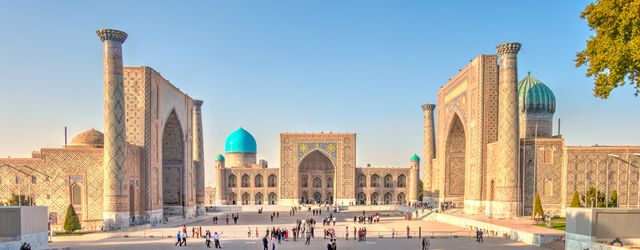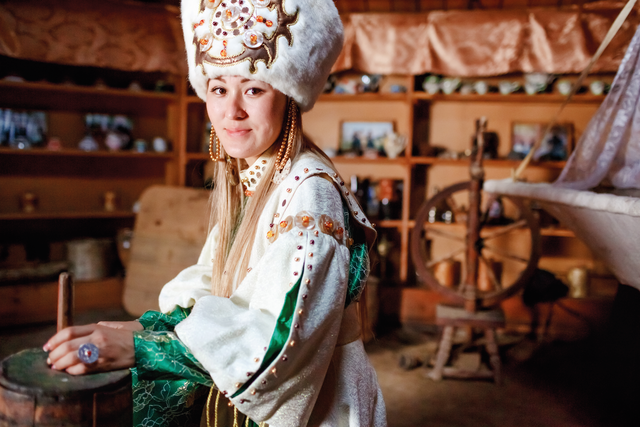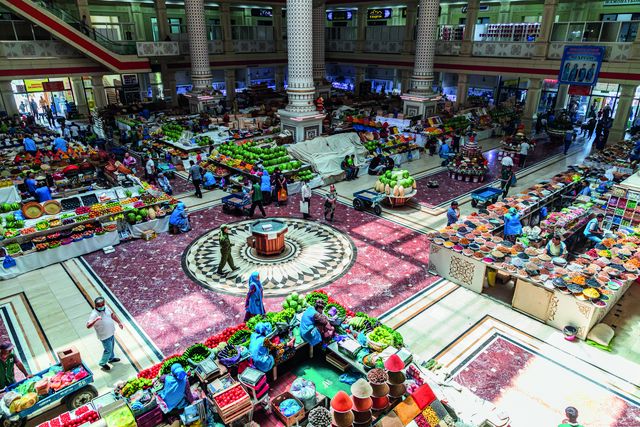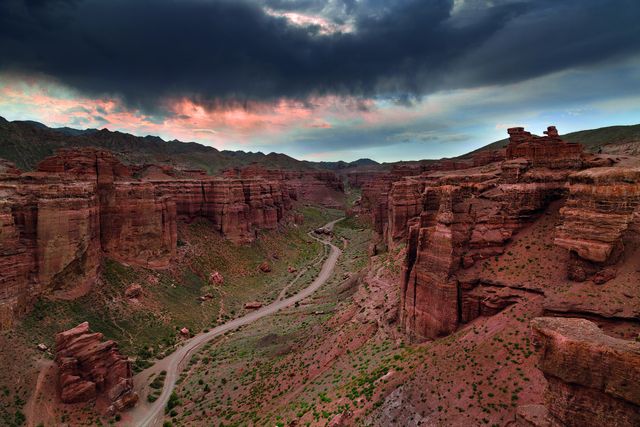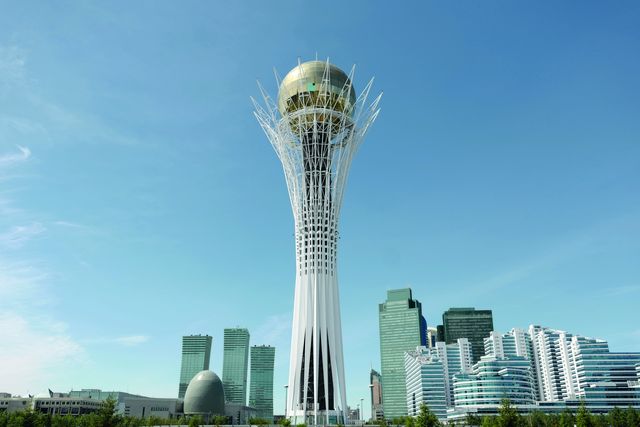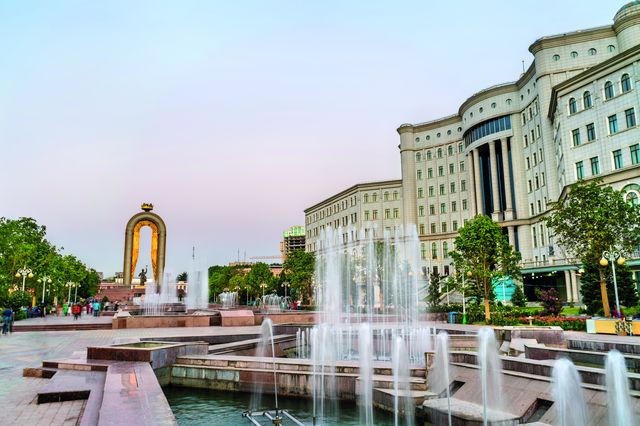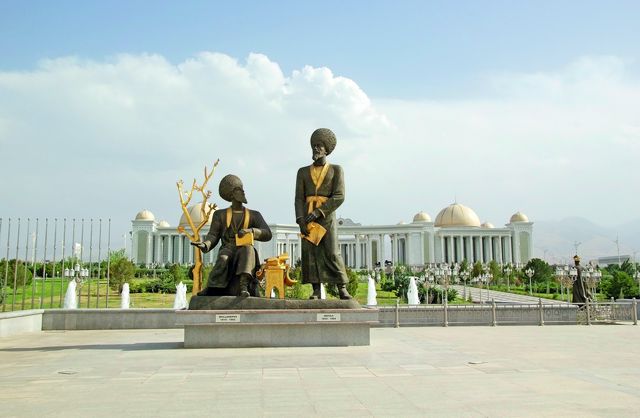Fascinating Central Asia
Central Asia has long been a crossroads between the cultures of the Mediterranean to the west and Iran, India and China to the east. Even in ancient times, the Silk Road was not just an important trade route, but it also spread ideas, cultures and religions in both directions. Even today, Central Asia forms an important bridge between Europe and Asia. The five countries of the region, Kazakhstan, Kyrgyzstan, Uzbekistan, Tajikistan and Turkmenistan, share the same name ending “stan”, which comes from Persian and means “country”.
What makes Central Asia special and how is Schrack Seconet active there? Area Sales Manager Larissa Kirsch shares some personal insights. She was born in the capital of Kyrgyzstan to Russian parents. When she was a baby, the family first lived in Turkmenistan, and Larissa Kirsch attended her first school class in a small town in Kazakhstan. As an adult, she was then invited to work for an important project in Uzbekistan. Her work as Area Manager for Schrack Seconet has now regularly taken her to Central Asia for 17 years: “I’m always amazed at the rapid development of these countries and I’m very happy with what I can do. After all, our solutions secure property as well as people’s lives and health.”
Uzbekistan
Our journey through Central Asia begins in Uzbekistan. This plunges us directly into a completely different world: The cities of Khiva, Samarkand and Bukhara were importantcentres along the Silk Road, on which, among other things, silk was transported to the west and wool, gold and silver to the east. Today, Tashkent is the capital of Uzbekistan. Fire alarm systems from Schrack Seconet are installed at the international airport there, as well as in the Palace of International Forums, a white marble conference centre. Finally, Samarkand is home to Schrack Seconet’s largest project in Uzbekistan, the Samarkand Tourist Complex. It includes a congress hall, eight hotels with up to 5 stars, restaurants, cafés, and parks.
Kyrgyzstan
The journey continues to Kyrgyzstan, where 90 percent of the country’s surface is over 1500 metres above sea level. Around a third of the country is covered by glaciers and snowfields, which account for the abundance of water. Kyrgyzstan is also one of the least forested countries in Asia. Hot summers are often spent at Lake Issyk-Kul, the second largest salt lake in the world. In the snowy and sunny winters, countless people visit the ski resorts, which are a 30-minute drive from the capital, Bishkek, and whose mountains remain brilliant white all year round. With a population of 1.5 million people, Bishkek is the largest city in the country. An endless stream of cars drives along the freshly tarred streets, while cafés, bazaars and shops beckon you to linger in the centre. Schrack Seconet has implemented fire protection for several exciting projects in Kyrgyzstan, such as business and shopping centres, a hotel, a factory and much more.
Turkmenistan
Turkmenistan is the third stop on our journey. The country has largely sealed itself off from the outside world. Important utilities such as light, gas, water and phone lines are free for citizens. Turkmenistan is rich in natural gas deposits. In 1971, a large gas-emitting hole opened up not far from the capital Ashgabat. The emitted gas was set on fire at the time, and it continues to burn to this day with flames up to 15 metres high. “The capital is a white wonder with wide streets lined with flowers and trees, with fountains and parks,” Larissa Kirsch tells us. Akhal-Teke horses are the pride and national heritage of Turkmenistan – they are the most graceful horses in the world. Schrack Seconet implemented several fire protection projects in Ashgabat: the Military Academy, the Institute of Geography, the Ministry of Construction and many others.
Tajikistan
Tajikistan is the fourth country we cast our eye at. In the south of the country, the oldest evidence of human ancestors settling in the region has been discovered, dating back one million years. More than two thirds of the area are covered with high mountains. Tajikistan has almost no fossil fuels but is the country with the most water in Central Asia. The potential of hydropower is now being exploited with the world’s largest dam project on the Vakhsh River. The first section went into operation in 2018. The capital is Dushanbe. Schrack Seconet implemented the Visocall IP communication system in the Danghara Hospital there.
Kazakhstan
Finally, we reach the largest country in the region: Kazakhstan. It’s also the world’s largest landlocked country and the ninth largest country in the world. Kazakhstan is predominantly steppe and possesses vast oil resources. One very special project in Kazakhstan is the nationwide networked fire alarm system for the country’s pipeline network. It was set up for the state-owned operator KazTransOil, which runs around 5,400 kilometres of oil pipelines. Larissa Kirsch remembers: “When we started building in the region, I often brought brochures with me when I visited companies. One of these brochures led an engineer to contact me after a few years – he had seen it by chance and had become aware of our solutions.” So, in the end, this large pipeline project can be traced back to this one brochure.
Do you want to know more?
- For further information on the topic of Central Asia, please see the following article.
- If you have any questions about Central Asia, please refer to our contact persons.


